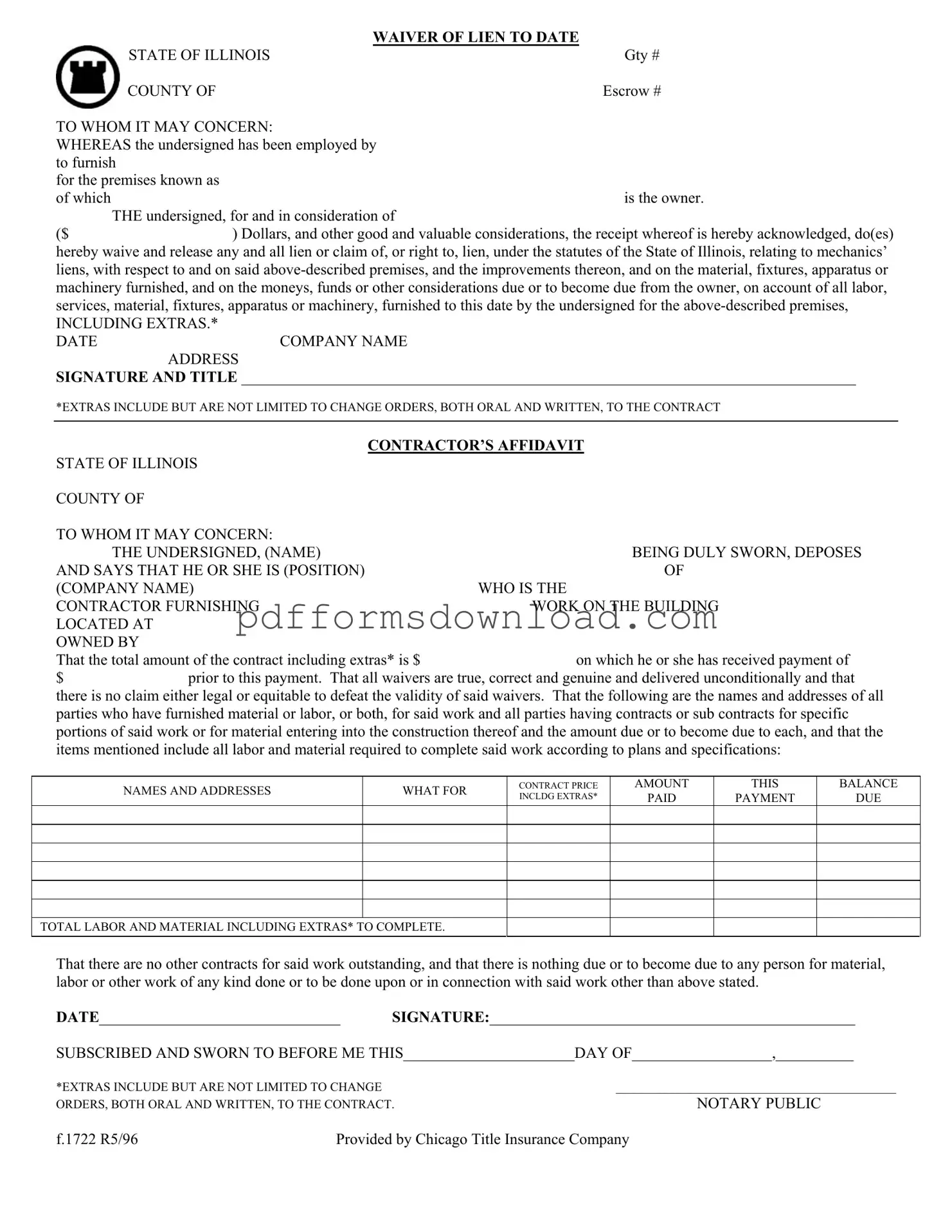What is the Chicago Title Waiver Format form used for?
The Chicago Title Waiver Format form is primarily used to waive any lien rights that a contractor or subcontractor may have on a property. By signing this form, the undersigned acknowledges receipt of payment and agrees to release any claims against the property for work performed or materials supplied. This helps ensure that the property owner is protected from potential lien claims after payment has been made.
Who needs to fill out the Chicago Title Waiver Format form?
This form is typically filled out by contractors or subcontractors who have provided labor or materials for a construction project. It is essential for those who wish to confirm that they have been paid for their services and to formally relinquish their right to place a lien on the property.
What information is required on the form?
The form requires several key pieces of information. This includes the name of the company providing the waiver, the name of the property owner, the specific address of the property, the total amount of the contract including any extras, and the amount already paid. Additionally, the form must include the names and addresses of all parties who have contributed labor or materials to the project.
What are "extras" in the context of this form?
In this context, "extras" refer to any additional work or materials that were not included in the original contract but are necessary for the completion of the project. This can encompass change orders, which may be communicated both orally and in writing. It is crucial to account for these extras to ensure that all parties are aware of any additional costs involved.
What happens if the form is not completed or submitted?
If the Chicago Title Waiver Format form is not completed or submitted, the contractor or subcontractor may retain their lien rights. This means they could potentially file a lien against the property if payment is not received. This could lead to legal complications for both the contractor and the property owner, making it essential to complete the form accurately and submit it promptly.
Is the waiver effective immediately upon signing?
Yes, the waiver is effective immediately upon signing, provided that the form is filled out correctly and the payment has been acknowledged. This means that once the contractor signs the waiver, they cannot later claim a lien for the work covered by that waiver, assuming all conditions are met.
What should I do if there are disputes regarding payments?
If disputes arise concerning payments, it is advisable to consult with a legal professional. They can help clarify the terms of the contract, assess the situation, and provide guidance on how to proceed. It is crucial to resolve any issues before signing the waiver, as doing so may limit your ability to claim unpaid amounts.
Can the form be modified?
While the Chicago Title Waiver Format form should generally be used as provided, modifications can be made if necessary. However, any changes should be made with caution and ideally reviewed by a legal professional to ensure that they do not invalidate the waiver or create confusion regarding the terms.
